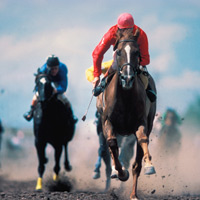The metal starting-gates fly open, the horses carrying their silk-clad jockeys hurtle forward and the crowd roars: ‘They’re off!’ There are few spectacles to compare with horse racing, so aptly named ‘the sport of kings.’ Every race has its share of drama, bravery and bitter disappointment.
And what started back in Roman times, and first gained its royal patronage during the reign of King James I, is now an amazingly rich and colourful global phenomenon.
Across the world, from Ascot to Melbourne, this great sport, excites, inspires and delights millions.
And of all the magnificent events in the racing calendar, three stand out – our own Royal Ascot, the French classic Prix de l’Arc de Triomphe and the Dubai World Cup. Each is unique in a very special way.
Royal Ascot, held just a short gallop from the royal residence of Windsor Castle, in Berkshire, is the epitome of traditional English style. For five days in June, the races are heralded by the daily procession of the Queen, a great racing enthusiast. She and other members of the Royal Family ride in carriages up the course each day at 2pm sharp.
Ceremony is the hallmark of the meeting, and spectators at Royal Ascot races look as though they have stepped straight out of the world of My Fair Lady. Men wear the required ‘morning attire’, including top hats and tails, while women parade the latest fashions and outlandish, eye-catching hats. In keeping with the rich, ingrained tradition of Royal Ascot, many of the same races have been run annually for more than a century.
Just across the Channel and a mere ten minutes from Paris’s most famous landmark, the Eiffel Tower, is witnessed the culmination of the European racing calendar – the Prix de l’Arc de Triomphe. This event, held at the Longchamp racecourse, which extends between the Seine and the Bois de Boulogne, is rated the most important flat race in Europe.
It features a 1.5-mile course and attracts more than 35,000 spectators. Competitors include winners of classical races in England, Ireland, France, Germany and Italy – all battling for the £1.1m divided between the first five. The race has great historical significance for the people of France. It was named in tribute to the courage of French soldiers killed and wounded during the First World War.
The Dubai World Cup is in every respect a very modern race. First run in 1996, it is now one of the most highly prized and is recognised as the richest race in the world, with a purse of £3.4m.
The race, run every March, hosted by the United Arab Emirates and staged at the Nad Al Sheba racecourse, has marked a rich new era in racing history. It is the dazzling highlight of the Dubai social calendar, with prizes being awarded to the best-dressed woman, the wearer of the best hat and the best-dressed couple.
It is highly appropriate that it is held in Dubai, because it is generally accepted that every thoroughbred in today’s world of racing is descended from the three Arabian stallions exported from this part of the world in the 15th and 16th centuries — the Darley Arabian, the Byerley Turk and the Godolphin Arabian.





